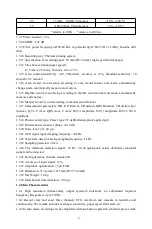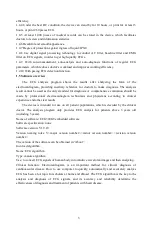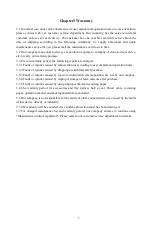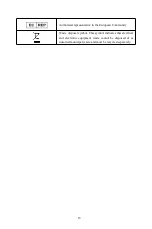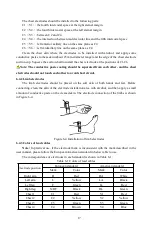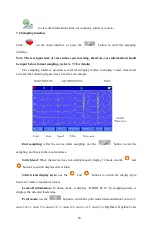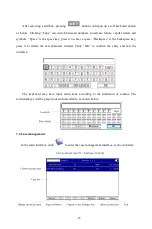
.
16
6.2 Power supply connection
6.2.1 AC
Insert one end of the provided three-core power cord into the device’s input socket, and
insert the other end into a three-core power socket that meets the requirements. Ensure that the
connection is secure and reliable, and the device is automatically grounded.
When the device is used in conjunction with other medical equipment, use the supplied
potential equalization wire to connect the equipotential terminal of the device to the equipotential
terminal of the connected equipment to prevent leakage current and protect the device.
6.2.2 Battery
The device has a built-in rechargeable lithium battery, which does not need to be
re-installed by user. Check the battery's power and status before use.
Note: Connect one end of the potential equalization wire to the equipotential terminal of
the device, and connect the other end to the ground to enhance the reliability of the
grounding. Do not use other pipes as ground wire, otherwise, the patient may be in danger
of electric shock.
6.3 Lead cable connection
Connect the lead cable to the lead cable interface on the device, and fasten it to the device
with the fixing knobs at both sides of the lead cable in order to prevent bad connection and
affecting the detection.
Note: The lead cable interface can not be used for other purposes except as the input
interface of ECG signals.
6.4 Electrode installation
Proper installation of the electrodes is an important part of accurately recording the
electrocardiogram. Make sure the electrodes are in good contact. Old and new electrodes or
reusable electrodes and disposable electrodes cannot be used at the same time. If different types
of electrodes are used together, it will seriously affect the ECG recording. The electrode or lead
plug must not touch other object surfaces or conductors, such as metal beds. Please replace them
all when updating the electrodes.
Warning: Do not test on part with wounds.
6.4.1 Chest electrodes
As shown in Figure 6-3:
Figure 6-3 Installation of chest electrode

